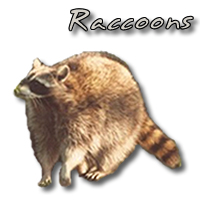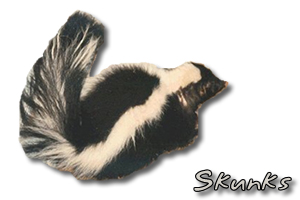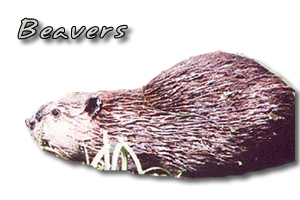
![]()

|
Potential Problems of Trapping & Relocating:URBAN WILDLIFE RESCUE, INC. receives close to three thousand calls annually, asking us to trap or to teach someone how to trap wildlife of all kinds. The number of people, who want squirrels trapped or attempt to trap them on their own, is staggering. From a biological standpoint, trapping nuisance animals can cause a problem as far as population growth is concerned. The effects of trapping apply not only to squirrels but also to most forms of wildlife. However, since squirrels can breed two times a year and are highly visible, the results of trapping them can be noticed relatively quickly. Low or moderate levels of trapping (or predation) can actually cause a wildlife population to increase. How quickly this occurs is dependent upon a wide variety of factors such as food availability, quality of habitat and weather. As noted by Kilgore (1967): Many wildlife populations increase and decrease naturally in response to available food, nesting areas, etc. When an animal is trapped or relocated from its habitat, a void is created. The food and nesting habitat once used by the trapped animal is now available to other animals. As long as the habitat is suitable, another animal or ecologically similar species moving into the area may fill the void. If trapping and relocating the animals create too many voids, pregnancy rates and the number of young born per litter will increase in order to fill the voids and take advantage of the available resources. This ultimately results in a population increase. Further, Redding (1977) notes: Since vertebrate species that have become pests have done so simply because they are so adapted to the prevailing habitat conditions, biological control, in particular the making of a habitat unsuitable to the species in question when such can be accomplished, is generally considered a much more desirable and effective procedure for controlling animals than just attempting to destroy or otherwise remove troublesome individuals. Also,...the destruction of individuals by artificial means (shooting, poisoning, etc.) or by natural predation may have only a temporary effect and in the long run may result in stimulating the offending population of animals to increase to a level of density that is greater than it would have been if no control had been attempted. Also, Boughey (1973) states: "Population reduction itself", Dr. Laun continues, "may have some very negative aspects. It has been observed many times that in mammal populations, the reproductive rate varies inversely with the population density. When the population reaches a high level, the birth rate shows an appreciable decline, and visa versa. Thus when a population is reduced to a low level by any of the various means of control the number of new individuals in the population increases simply because of the increase in birth rate." Ricklefs (1990) notes: Should the consequent losses from one cause or another bring the population density far below the carrying capacity, the subsequent reproduction rate will be higher than usual. As recognized by Dasmann (1981): If a species is removed from a habitat, populations of ecologically similar species increase in response to the additional resources made available. Wildlife managers, biologists, hunters and trappers have used limited hunting and trapping for years in order to manipulate game populations. The result has been high numbers of game animals for the hunting public. Ricklefs (1990) further notes: ....a population can be stimulated to increased productivity by hunting. If excess individuals are removed, the survivors obtain more food and space, and their productivity increases. In regard to artificial population reduction, Giles (1978) states: The opening of one Adirondack study area to hunting incidentally demonstrated the relationship between food availability and reproduction, before hunting was allowed, the overcrowded deer population in the DeBar Mountain region had a pregnancy rate of 57 percent, with 0.7 surviving embryos per pregnant female. After the population had been reduced by two years of hunting, pregnancy rates rose to nearly 100 percent with 1.8 embryos per female; nearby areas inaccessible to hunter exhibited no increase in reproductive performance. Levine (1972) notes: Population reductions tend to increase birth rates; bounties can effectively increase a problem in some species and areas.
Selective catching, which is possible through many means of trapping animals, changes the population content, often by raising the proportion of females. This increases the survival rate of the remaining individuals, increasing the tempo of growth and development, and thus intensifies mating. The productivity of the population thus grows, making for an increased total catch. Rather than attempting to eliminate a nuisance species, which, over time, may result in actually increasing the population, several exclusion tactics, otherwise known as animal proofing, should be tried. Animal proofing can be as simple as not leaving pet food outside. More complex tactics are available, depending on the animal and problem. Specific animal proofing strategies can be developed for individual homeowners as well as larger public areas. In some cases, individual animals can be trapped and relocated. However, trapping and relocating is not always the most humane thing to do. An animal that is relocated may not have a good chance for survival without the human doing the relocating having knowledge of the habitat and other requirements of the animals. Please call Urban Wildlife Rescue at 303-340-4911 or email us if you have any questions, or if you need help with wildlife problems, animal proofing or injured wildlife.
Please Visit Our Humane Eviction Pages Below: |




